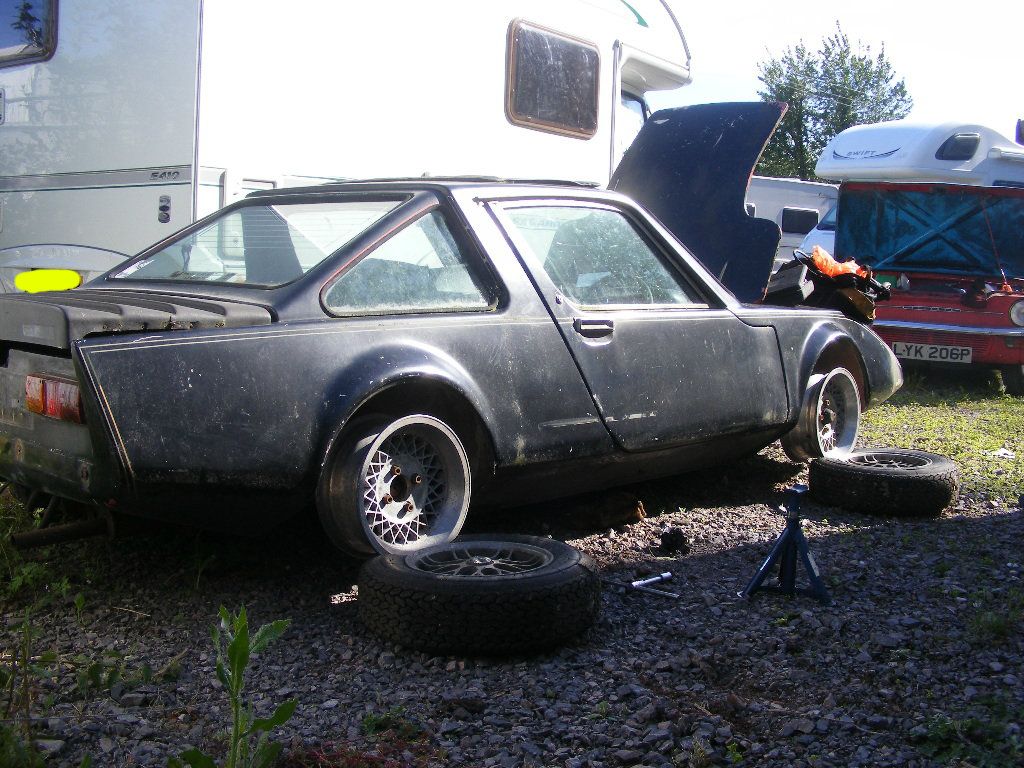|
|
|
Mar 22, 2012 19:08:00 GMT
|
|
Had a bit of a discussion on another forum about the size of positive lead I'm using.
Basically, battery in the back, earth lead to boot floore and all the earth leads that were on the battery are earthed to the chasis.
the positive lead is about three times bigger than standard (aircraft starter cable) and terminates at a kill switch in the engine bay.
the oppinion of this fellow is that my positive lead will be to big and should be matched to the earth lead.
So, is he right?
|
| |
Last Edit: Mar 22, 2012 19:10:07 GMT by claymore
|
|
|
|
|
|
|
Mar 22, 2012 19:12:27 GMT
|
No such thing as too big. Ok, so it will weigh more, cost more, and be harder to terminate, but if you can cope with that then go for the biggest you can cope with. Bigger cable = less resistance = less voltage drop. The voltage drop could be significant over a few metres of cable passing a couple of hundred amps while starting the engine, so the bigger the better. Electrons don't just get lost while wandering about in a bigger pipe. ;D Is this guy saying that you'll get worse perfomance with a bigger cable? If so, tell him from me that he's talking out of his  - and that's from someone with a degree in Electrical Engineering.  |
| |
Last Edit: Mar 22, 2012 19:13:29 GMT by jrevillug
|
|
|
|
|
Mar 22, 2012 19:13:24 GMT
|
|
As long as the earth lead is sufficient for the starter etc then the size of the positive is irrelevant. Basically you need to look at the smallest lead and not the largest.
Paul H
|
| |
|
|
|
|
|
Mar 22, 2012 19:16:50 GMT
|
|
Thanks for confirming that, I won't be changing anything anyway.
This was his post:
"The ground needs to be the same size as the feed.
If it isn't you can run into a situation, where basically, the feed can supply more current than the return can handle.
You can end up with effectively a ground side voltage drop.
Think of it as water...
Water pressure inside the reservoir pushes gallons of water through the pipe. The water turns the water wheel and then flows back into the reservoir. In an electrical circuit, electrical pressure (voltage or volts) pushes electrical volume (current or amps) through the circuit, operating a load. The load may be a computer, a motor, a lamp, a relay, or other device. In the water circuit, the water uses up most of its energy turning the water wheel. Water continues flowing toward the reservoir, but it flows at a lower pressure.
Likewise, electrical pressure (voltage) is used up operating the load. Therefore, voltage falls to about zero on the ground side, but current keeps flowing toward the battery. Because the voltage in a healthy ground circuit should be about zero, some technicians call it ground zero.
A kinked return pipe (Or smaller pipe than what you feed into the water circuit) restricts water flow back to the reservoir, slowing down the water wheel and causing a pressure reading on the return side of the wheel. Likewise, ground side voltage drop hurts load performance and causes a voltage reading at the ground side of the load.
Another good reason, why using the chassis as a ground path <Especially for that distance> for the main return is a bad idea is that the electicity will take the easiest path back... this could be through anything. "
|
| |
|
|
|
|
|
Mar 22, 2012 19:28:24 GMT
|
|
His post does make sense, but he's more saying that you might need a bigger ground wire than saying that you need a smaller feed.
However, if the earth cable between the battery and the bodyshell is as least as big as the original one, and the connections between the cables and the body are good then you shouldn't have a problem with a ground-side voltage drop.
It is true that running the return current through the body won't control where it goes, but that shouldn't present an issue - most cars with batteries at the opposite end of the car to the engine (Eg Mini, some Audis, MGB) use a similar system.
|
| |
|
|
|
|
|
Mar 22, 2012 19:42:48 GMT
|
|
First up, I'll hold my hand up and say I'm not an electrician.
It sounded like nonsense at first, but after reading his explanation, I agree that he seems to be talking about the earth leads not being up to the job.
I can see why the long positive lead needs to be beefed up. If the earths to the battery are short, I can't see it being a problem if they're not quite of the same gauge.
I converted a Quantum 2+2 to Zetec a few years ago, which required the battery to move to the boot. Being a GRP shell, I had to run both the pos. and neg. leads all the way from the boot to the front. I just used some good quality heavy duty leads and had no problems.
|
| |
|
|
|
|
|
Mar 22, 2012 19:48:12 GMT
|
|
I've used the same cable on a couple of other cars in the past with no problems, but I think I might just double up on the earths in the boot.
|
| |
|
|
|
|
|
Mar 22, 2012 19:51:55 GMT
|
|
The earth lead is fine the same as it was - it's still essentially the same length (the shell of the car is essentially zero resistance)
The reason you need to make the positive lead thicker is because it's so much longer - If it was the same diameter as before the voltage drop would be quite high and the starter would be weak. The thicker wire (with less resistance per foot) makes up for the extra length.
There is no harm in upgrading your earth cables. That bloke has an oversimplified understanding of electronics - He'll get by OK, but that's really not how it works in practice.
Also, there is no such thing as "wire that is too thick". Thicker wire of the same metal is always electrically better, Until you start sending high frequency signals down it, but that's another matter.
|
| |
Last Edit: Mar 22, 2012 19:53:13 GMT by cobblers
|
|
|
|
|
Mar 22, 2012 20:01:21 GMT
|
Thank's for all the help chaps, put my mind at rest  |
| |
|
|
|
|
|
Mar 22, 2012 20:44:37 GMT
|
Thanks for confirming that, I won't be changing anything anyway. This was his post: "The ground needs to be the same size as the feed. If it isn't you can run into a situation, where basically, the feed can supply more current than the return can handle. You can end up with effectively a ground side voltage drop. Think of it as water... Water pressure inside the reservoir pushes gallons of water through the pipe. The water turns the water wheel and then flows back into the reservoir. In an electrical circuit, electrical pressure (voltage or volts) pushes electrical volume (current or amps) through the circuit, operating a load. The load may be a computer, a motor, a lamp, a relay, or other device. In the water circuit, the water uses up most of its energy turning the water wheel. Water continues flowing toward the reservoir, but it flows at a lower pressure. Likewise, electrical pressure (voltage) is used up operating the load. Therefore, voltage falls to about zero on the ground side, but current keeps flowing toward the battery. Because the voltage in a healthy ground circuit should be about zero, some technicians call it ground zero. A kinked return pipe (Or smaller pipe than what you feed into the water circuit) restricts water flow back to the reservoir, slowing down the water wheel and causing a pressure reading on the return side of the wheel. Likewise, ground side voltage drop hurts load performance and causes a voltage reading at the ground side of the load. Another good reason, why using the chassis as a ground path <Especially for that distance> for the main return is a bad idea is that the electicity will take the easiest path back... this could be through anything. " this is not correct, the battery does not push the electricity, the starter draws the current, by effectivly a controlled short in the starter, this is why all the other circuits like the lights go dim or shut down, the cables need to be able to pass the current that the starter demands, to small and it heats up, thats why a short to earth in a live cable melts the insulation, , once you get to the size the starter demand can handle, the only benefit of thicker cable is to reduce voltage drop over distance. |
| |
|
|
|
|
|
Mar 22, 2012 23:28:50 GMT
|
|
TBH with you I allways use the same dia as the poss lead in all my installations,simply as a smaller earth lead can get rather hot......make your own mind up
Dave
|
| |
|
|







 - and that's from someone with a degree in Electrical Engineering.
- and that's from someone with a degree in Electrical Engineering. 




